La-17: Lavochkin's drone
Post-war development of reactive combat aviation caused the need to create new tools that provide an effective fight against high-speed targets flying at different heights. At the end of the forties, experimental work was already underway, but it had already shown its promise on the first domestic air-to-air guided missiles (UR) in the NII-1 MAP, NII-2 MAP, at the plant No. 293 (SNARS-250 missile), also, the NII-88 specialists at the Kapustin Yar training ground began flight testing of domestic copies of German anti-aircraft missiles. In this regard, there was a need for target aircraft, which could provide testing and training firing anti-aircraft guided missiles and artillery systems, as well as fighter missile carriers.
Previously used for these purposes tethered towed targets such as cones and panels. However, with increasing speeds, the use of such targets made of canvas, it became almost impossible. In addition, the cone was invisible for developing locators. They tried to solve this problem by creating towed targets, which practically imitated manned aircraft in size and design. But they could not meet the new requirements, including to ensure the safety of the aircraft - tug. If, when attacking a fighter with cannon armament, the target’s lag hundreds of meters from the carrier provided sufficient security guarantees for the firing, the guided missile could behave too independently and instead of a target be known for the towing plane. The use of longer cables was impossible.
The next step in trying to solve this problem was an attempt to use as targets for missile tests weapons ordinary aircraft, equipped with appropriate equipment for flying in unmanned mode. The main advantage of these targets was proximity to real targets in terms of susceptibility and signal characteristics. At first, practically unfinished Tu-4 aircraft were used. The pilots took off from the airfield, took the bomber to a predetermined course, turned on the autopilot, and then descended by parachute. If the Tu-4 could not be shot down with a rocket, the fighters providing the tests would finish it off. It was more difficult to use more modern IL-28 as targets. The bailout, even if it was carried out according to the standard scheme, without complications, often adversely affected the health of the pilot. I had to develop equipment for the Il-28, providing unmanned take-off and flight along a given route. Another disadvantage of such targets, refitted from manned aircraft, was the high cost. As we see, by the beginning of the fifties there was a need to create a fairly cheap unmanned target, in terms of flight tactical characteristics approaching the combat aircraft of that time.
In those years in the Soviet Union, naturally, there was still no specialized organization that would deal with the subject of target aircraft. And, then, given the authority and design level of S.A. Lavochkin, Commander-in-Chief of the Air Force Marshal K.A. Vershinin suggested that he be engaged in the creation of a target for testing and firing of K-5 air-to-air guided missiles and advanced anti-aircraft guided missiles. Work on the target aircraft began in 1950 year in accordance with a government resolution of 10 June 1950, No. 2474-974.
Work on the creation of the target aircraft, which received the internal name "product 201", at the pilot plant No. 301 was headed by I.A. Merkulov, then he was replaced by A.G. Chesnokov. The main in the choice of technical solutions for the new car was the desire to extremely reduce the cost of the product. The aircraft was made in the style of the German projectile aircraft V-1. The contours had an extremely simple configuration. The wing was rectangular in shape and recruited from one CP-11-12 profile.
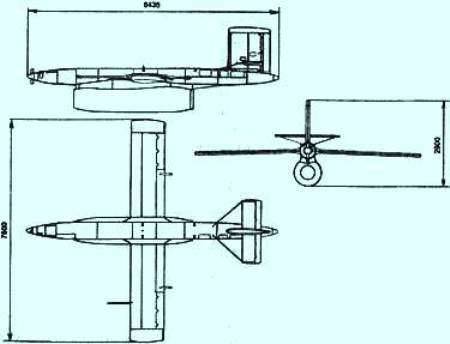
Weighted perfection of design sacrificed manufacturability. In particular, it took the bulk of the length of the fuselage, carrying the fuel tank made of steel, which by then mastered hermetic welding better than a similar operation on aluminum alloys. The choice of ramjet engine (ramjet) RD-800, also determined by simplicity and cheapness. The development of the engine led OKB-670 MM Bondaryuk, who has already completed the development of an engine close in dimension, for the anti-ship missile of the Shtrom coastal complex. To reduce the cost instead of pumping used forcing gasoline, carried out by means of compressed air placed in spherical cylinders. The engine was suspended under the fuselage near the center wing section.
The autopilot AP-53 was developed by the main organization of Minaviaprom on this subject - OKB-112 chief designer B.Е. Antipov. It used pneumatic steering machines, which were powered with compressed air from cylinders. Not immediately found an adequate solution, how to simplify and cheapen the autopilot. In 1952, the AP-53 was changed to AP-60, and a year later - to AP-61.
In addition to the autopilot, the target was equipped with radio command equipment, created by a team of N.I. Belova, in one of the leading organizations of the time for the development of control systems for missiles and other unmanned aerial vehicles - SRI-648. Wired antennas of this equipment tied the middle part of the fuselage with the ends of the stabilizer. As a source of electricity, a generator was used that rotated with a small two-bladed propeller - a “wind turbine” installed in the toe of the fuselage.
At an early stage of development for reuse, it was planned to equip the target with a parachute-reactive system and special shock absorbers for a soft landing. However, they turned out to be rather heavy, too complicated to work out, they took up a lot of space inside the target. Yes, and the landing of the target itself was the result of essentially non-standard and as intended by an infrequent situation. It was carried out only in the event that the rocket or the aircraft failed to bring it down.
Therefore, as a rescue scheme, the target took a horizontal landing on the engine block, which was used as a landing ski. In contrast to the turbojet, the direct-flow engine was not densely saturated with internal structural elements, and its body deformed freely, softening the blow.
In the concept of ultimate simplicity, successfully embodied in the "201 product", there was one dubious link - a ramjet engine. It worked only with a sufficient velocity head of the incoming flow and, in principle, could not provide an independent takeoff of the aircraft. Therefore, the target aircraft could only be launched from an air carrier. Initially it was supposed to use Tu-2, still available in the Air Force in large numbers, but already absolutely unpromising as combat vehicles. But the target with a rather large under-venture engine and a high keel did not fit under the plane. The placement of the carrier above the fuselage, modeled on the German “Mistels” from the “Junkers-88” with the fighter mounted above it, was considered too risky.
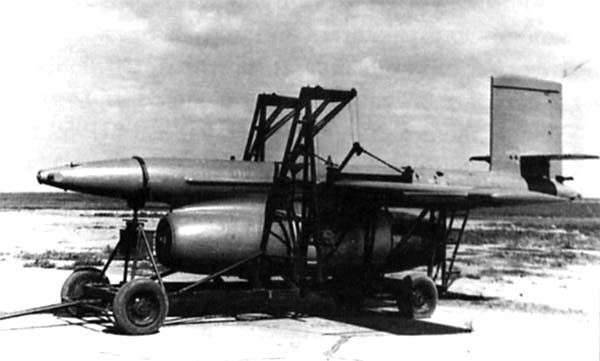
At the end of 1951, at the suggestion of LII, they began to work out the use of the Tu-4 with placing the target under the wing, outside the engine nacelle, and from next year this variant was accepted as the main one. In the process of development, they increased the dimension of the engine, which received the appropriate designation - РД-900. With a net weight of 320 kg at flight speed 865 km / h, he developed a thrust of 625 kgf and 425 kgf at altitudes 5 and 8 km, respectively.
For the launches of the target, the Tu-4 was prepared, dismantling bomb and small arms from it. At the landfill Vladimirovka deployed ground-based radio equipment MRV-2M, which included two stations. The target was tracked with the use of the P-30 circular radar, and the SON-4 artillery station was also possible for this purpose.
Flight tests began on 13 in May on 1953, and were carried out first with programmed targets, without using radio control. Due to the marked insufficient thrust of a ramjet engine at low speeds, after launching, before resetting the target aircraft at a height of about 8 km, and at a speed quite decent for the Tu-4, about 500 km / h, the ramjet could not fly without braking and accelerate . Therefore, after dropping from the carrier, the target went into a dive, which lasted about one and a half minutes. After acceleration to speed 845 - 905 km / h, the target was already able to vigorously maneuver and even gain altitude. In one of the flights she managed to climb almost 10 km. Tests have shown the need to make a number of improvements in the design and in June, by order of the Council of Ministers, the launches temporarily stopped.
State tests were held in Vladimirovka from June to October 1954. Tu-4 performed 19 flights, of which 13 - with the reset of targets, including one pair of launch. In all flights for safety, the target was accompanied by a MiG-15. During the flights, constant speed was maintained from 575 to 905 km / h, altitude ranged from 2,8 to 9,75 km. The operating time of the power plant was up to 8,5 min.
During the tests revealed the possibility of increasing the duration of the flight at 1,5 min. due to throttling of the engine, but for this it was necessary to modify the radio control system, for the transfer of the appropriate command to the board. After the engine stopped working, the target continued to gain altitude during the 80-100 since, losing momentum sharply. Then it began to decline at a speed of 300 — 340 km / h, each second losing 8 — 10 m in height.
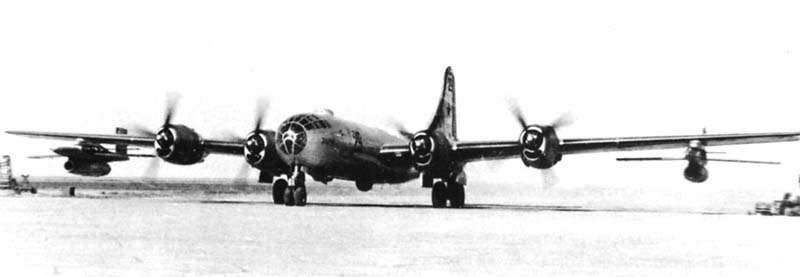
Before landing, the target was launched at large angles of attack by commands from the ground, with the result that the vertical speed was halved. As a result, damage to the structure during landing was limited to the engine, which, in principle, was quite simply replaced by a new one. During the tests, a small radar visibility of the target was revealed - it was detected by the onboard radar RP-1 and "Emerald-2" interceptor fighters at 2-3 km distances with tracking support at a distance of 1,1-2,5 km. This prevented the testing of guided missiles K-5, since the actual minimum launch range of these products at that time exceeded 3 km.
In conclusion, the State Commission was recommended to carry out military trials of the target next year and for this to convert five more Tu-4. Taking into account the first vehicle that participated in the state tests, the total number of bombers converted into target carriers at Kazan aircraft plant No. XXUMX reached six and did not increase in the future.
In general, the target met the requirements for it, was accepted for supply by the Ministry of Defense and received the designation La 17. It is curious that under this index in the foreign literature of the mid-fifties the fighter La-15 appeared - the machine, unlike the MiG-15, was not massive and not immediately correctly identified by analysts of the NATO countries. Secrecy in those times in the USSR was at the highest level.
Already in 1952, they began to launch mass production of the La-17 at the Orenburg aircraft plant No. XXUMX. From 47, they were produced at aircraft factory No. XXUMX in the city of Gorky, where almost two and a half hundred targets were built. La-1956 successfully used for combat training of personnel and the development of new weapons, but had one significant drawback - the need to use the media Tu-21. The latter gained the height of the launch in two hours, during which circumstances could interfere with the conduct of the firing. At the same time, the Tu-17 burned a lot of gasoline, and the number of serviceable carriers prevented group launches to imitate mass raids, and limited areas of possible firing with the use of La-4.
By the mid-fifties on the initiative of A.N. Chesnokov began the development of the La-17 modification with a surface launch - the “203 product”, later called the La-17M. The task had two alternative solutions. The first is to equip the La-17 with a starting accelerator, accelerating it to a speed of more than 700 km / h. Another solution is to abandon the use of a ramjet engine by switching to a turbojet. In the latter case, it was necessary to accelerate the target to a speed sufficient for a stable, controlled flight, that is, in 2-3 times smaller than was necessary for a ramjet.
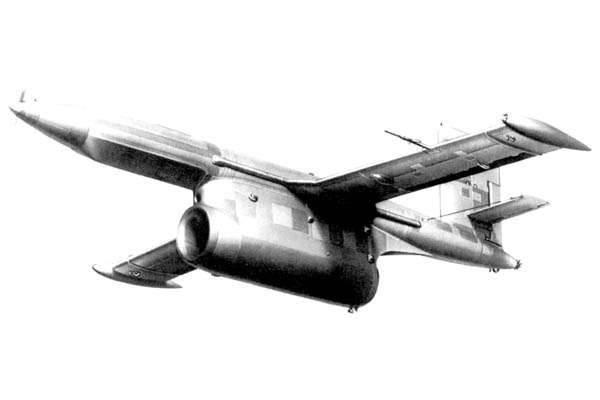
At the same time, the solution of the problems of the dynamics of the start of the target and the separation of accelerators, whose mass turned out to be several times smaller, was much simpler. In addition, the use of TRDs opened the way to a significant increase in the tactical performance of the target, in particular, the ceiling, which did not correspond to the level of aviation of that time.
After carrying out the design studies, they chose the path of transition to the use of the TRD RD-9BK - a short-life version of the RD-9BF engine used on the MiG-19. Due to the unforced execution, the maximum thrust was reduced from 3300 to 1950 kgf, which still many times exceeded the thrust of the direct-flow RD-900.
The development of the "203 product" was given by the July 1958 government decree of the year. In the same year, a preliminary design was released, and the next year, production of 15 targets for flight and one for static tests began.
Mobile launcher created on the basis of the wheel carts serial anti-aircraft gun KS-19. Her towing was carried out by car YAZ-214 (KRAZ-214).
La-17М was launched using solid-fuel accelerators PRD-98, developed in the design bureau of the Moscow plant No. XXUMX. Each accelerator was equipped with a charge of solid fuel of mass 81 kg, developed thrust to 140 tf. Hours ranged from 10,6 to 1,6 with. The total thrust impulse of two accelerators PRD-3,1 - 98 kgf ensured the acceleration of the target to a speed exceeding 26000 km / h.
On the case of the accelerator in the nose and tail parts in a plane that does not coincide with its longitudinal axis, was installed on a pair of triangular surfaces. These surfaces created aerodynamic forces that contribute to the removal of the accelerator target body upon completion of the work. Take-off weight increased to 3065 kg (2472 kg without accelerators). Engine run time increased to 35-39 min., Which made it possible to raise the range to 490 km. Due to the use of many times more powerful engine, the ceiling increased to 16 km. But in the absence of regulation of engine thrust, the target at low altitudes exceeded the limits on the allowable velocity head, therefore the minimum height of the target application was 3000 m. By the early sixties, as a result of the proliferation of anti-aircraft missile weapons, there was a tendency for low-altitude aviation and a lower limit La-17M applications no longer met the requirements of the times. To simulate various air targets with an effective dispersion surface from 0,6 to 25 sq. m. La-17M were equipped with appropriate Luneberg lenses or corner reflectors, increasing the radar visibility of the target. However, in the radar wavelength range around 3 cm, the radar visibility of the La-17M remained insufficient. La-17M launched into production at the aircraft factory in Orenburg, where it lasted until the 1964 year.
In November, the 1961 of the year ordered the creation of a new target modification, later called La-17MM, with a range of application heights from 500 m to 18 km, with an effective dispersion surface in the 3-cm range corresponding to Tu-16, Il-28 and the FKR-1 cruise missile. The main changes in the design of the La-17MM were related to replacing the engine with an RD-9BKR with throttled throttle to limit speed during low-altitude flight, installing a reflector with a diameter of 0,3 m in the rear fuselage, and equipping with transponders to more accurately determine the coordinates of the target with P-30 ground radar and Kama systems. To keep the target on a given route with tolerances with increased flight duration, the autopilot AP-73 was replaced with AP-122 with an integrating unit inserted into the heading channel.
According to the results of joint flight tests conducted from October to December 1963, the range of application heights of La-17MM was equal to 0,58-18,1 km, and the flight duration - from 32 minutes at minimum height to 97 minutes when flying over ceilings. At high altitudes, the speed reached 875 km / h, while landing - 270-302 km / h with the vertical component 5-6 m / s. La-17MM was the last modification of the target, which was developed by OKB-301, after the death of S.A. Lavochkin.
As a result of the transition of the former Lavochkin Design Bureau to the subordination of VN Chelomeyu, as a branch number 3 OKB-52, and after restoring independence of the Khimki Design Bureau, concentrating its specialists on the development of unmanned spacecraft, further improvement of the La-17 family targets was carried out by the Kazan Sports Design Bureau, now called the Falcon Design Bureau, under the guidance of A.I. Osokina.
By the beginning of the sixties, engines of the RD-9 type in manned aircraft were replaced by TRDs of the P-11 family. Maintaining the production of RD-9K in Ufa, especially for targets, was unprofitable. The RD-9FC equipped with an afterburner chamber was only used in aircraft missiles of the K-10 family, but these products gradually gave way to more advanced cruise missiles. In 1985, the RD-9BKR was finally discontinued. Therefore, we developed another modification La-17K, which was produced in Orenburg by the Strela software from 1978 to 1993.
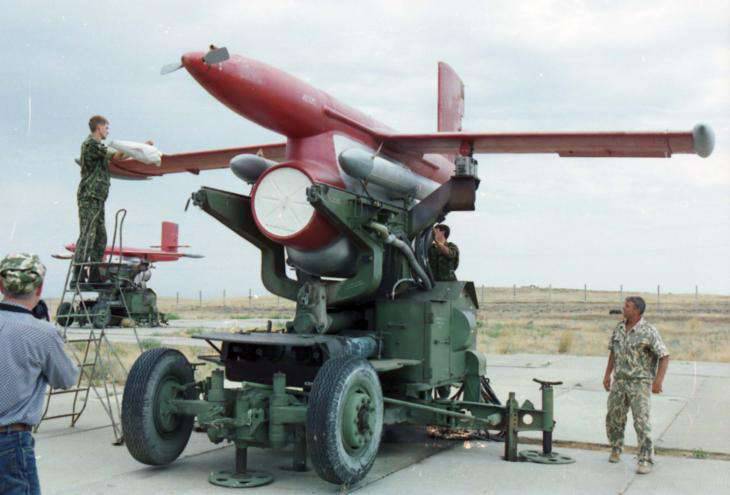
The minimum application height of La-17K decreased to 200 m, the maximum value of the effective dispersion surface was reduced to 40 sq. The flight duration reached one hour, the turn radius was 6,8-7,6 km with 40 ° roll and 9,7-10,8 km with 20 ° roll. The starting mass of the target is 3,1 tons, including 0,58 tons of fuel and 11 liters of oil.
The targets of the La 17 family were widely used to provide combat training and to test new weapons in our country and the Allied Forces. Documentation on the production of La-17 was at one time transferred to China. In this country, on the basis of the original modification with a ramjet engine and air start, the Chinese designers developed an analogue of La-17M - a CK-1 target with an engine based on Wopen-6 - a licensed version of the RD-9B, produced for F-6 - a Chinese analogue of MiG-19 . Target SC-1 was adopted in the 1967 year, that is, with a six-year delay in comparison with the La-17M. In 1977, China developed a version of CK-1А, which has wing containers with additional equipment. In 1982, these containers were replaced with additional non-discharged fuel tanks. New modification received the designation CK-1В. The latest version of the target СY-1С (“Chang Kong 1C” - “Blue Sky”) successfully completed the flight tests in November 1984 of the year and was transferred to mass production.
With the completion of the development of the La-17 target, a completely predictable proposal arose to create an unmanned reconnaissance aircraft based on it, capable of operating in areas particularly dangerous for manned aircraft, either according to the degree of protection by means of air defense, or by the level of radioactive contamination. By the end of the fifties, a possible war was not conceived without nuclear weapons, and during the tests it was necessary to ensure the measurement of radiation and air sampling.
According to a government decree of June 1956, the OKB-301 was instructed to create, on the basis of La-17, a reconnaissance "210-FR product" equipped with a BAF40Р camera on a rocking installation to compensate for the motion of the Earth during flight. Corner reflectors, radio transparent wing tips and Luneberg lenses were removed by installing metal tips. Like the target, the reconnaissance aircraft had to be launched from a carrier aircraft, while the flight range at an altitude of 7 km exceeded 170 km.
In February, the 1958 of the year was also assigned to develop the La-4B unmanned reconnaissance vehicle launched from the Tu-17, with an increased flight range, which ensured an application radius of up to 100 km. It is worth noting that by this time the original La-17 and the very concept of the air launch are outdated. Since 1959, reconnaissance modification work, which received the name La-17BR, has already been carried out on the basis of La-17М starting from the ground with the TRD RD-9BK.
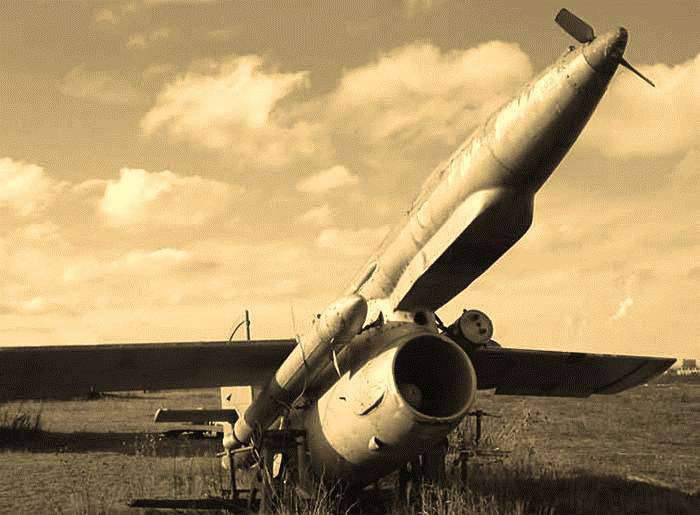
Under the leadership, who replaced Lavochkin M.M. Pashinin, on the basis of the La-17M, began the development of the “204 product”, intended for photo- and radiation reconnaissance at a distance of up to 250 km. The scout was equipped with the AFA-21 camera and was equipped with the autopilot AP-63. Due to the need to deploy reconnaissance equipment, the length of the fuselage increased to 8,96 m. In order to be able to be transported by road, the wings were easily removable. A scout, unlike a target, had to be used many times. Landing apparatus provided for a parachute. Although, in practice, intelligence officers, as a rule, landed like “targets” along an airplane, on a gondola of a power plant.
After this, the TRD was not subject to recovery, and other elements of the unmanned reconnaissance vehicle suffered. However, a relatively accurate landing of an unmanned reconnaissance aircraft was required to save the captured film and other information received. According to the results of joint tests that ended in the summer of 1963, it was found that La 17Р could fly reconnaissance at a distance of 7 km when flying at an altitude of 200 km, and when flying at low altitudes below 1000 km. The flight speed was 90-680 km / h.
The use of target aircraft was a planned event carried out at the appointed time. The TBR-1 tactical unmanned reconnaissance complex with the La-17Р was to become a fairly mobile unit, with an acceptable deployment time at the launch position. The starting squad of the complex included the KRAZ-214 or KRAZ-255 towed by vehicles, the SUTR-1 launch systems, the TUTR-1 vehicles, towed by the ZIL-157 or ZIL-131 vehicles, the KATR-1 vehicles, or the KATS-164 vehicles, or the special vehicles KATR-2, and the special vehicles KATR-XNUMX or emergency vehicles, or special ZAT-XNUMX vehicles; checks of the target equipment and ensuring the launch of the main engine, as well as radio command and radar stations MRV-XNUMXM and Kama, to control the unmanned reconnaissance aircraft and track its flight.
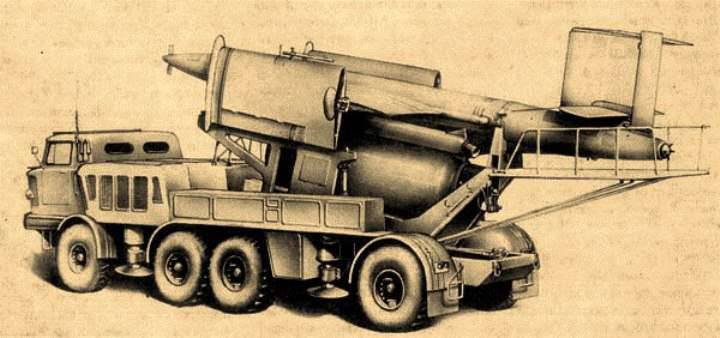
A separate squadron of unmanned reconnaissance aircraft also included a technical-operational unit equipped with special vehicles for checking equipment, truck cranes and other equipment, a drive detachment providing landing of an unmanned reconnaissance aircraft in a given area and retrieving reconnaissance materials from its side, other units and equipment.
The TBR-1 complex has been improved. The upgraded reconnaissance aircraft La-17PM, in its technical solutions, in many respects corresponded to the target La-17MM. Later developed and self-propelled installation SATR-1 on the chassis ZIL-134. Instead of the initially taken photographic equipment, unmanned reconnaissance aircraft could carry cameras AFA-40, AFBA-40, AFA-20. FFT-21, ASChFA-5M, Chibis camera, Sigma radiation reconnaissance equipment. Operating experience showed that, despite equipping unmanned reconnaissance with tracer, it was not always possible to correctly determine the height of their flight and change the angle of attack before touching the ground. Scouts installed cargoes with cables ejected from the tail section of the hull at low altitude and sagging, like a hygro ground under a balloon. When the cargo touched the ground surface, he braked and pulled a check into the body of the unmanned reconnaissance with a cable. As a result, the autopilot moved the car to the desired angle of attack, reducing the rate of descent.
From the second half of the sixties, the improvement of both variants of the La-17 was carried out in Kazan by the Sport Aviation Bureau, later renamed the Falcon OKB. By the beginning of the 1980-x, modern BP-17 and BP-17 began to arrive at the outdated La-2Р and La-3РМ.
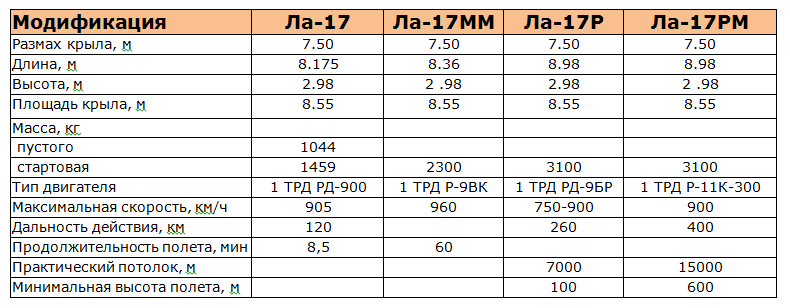
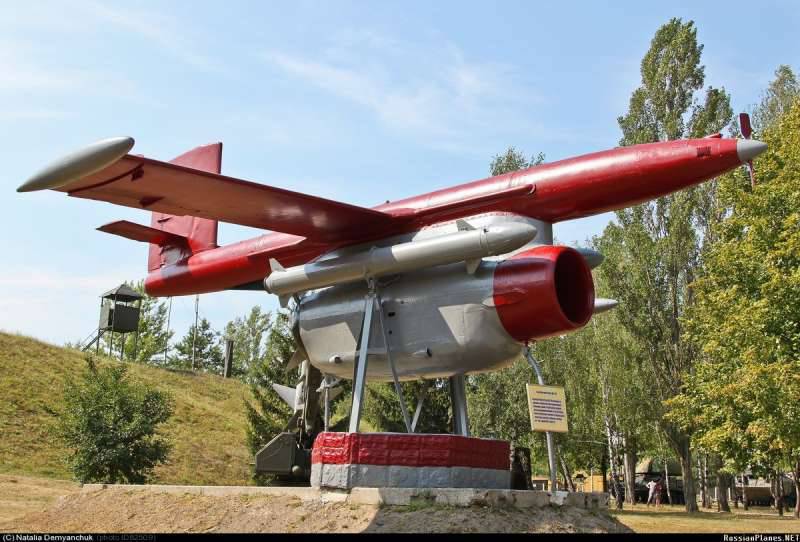
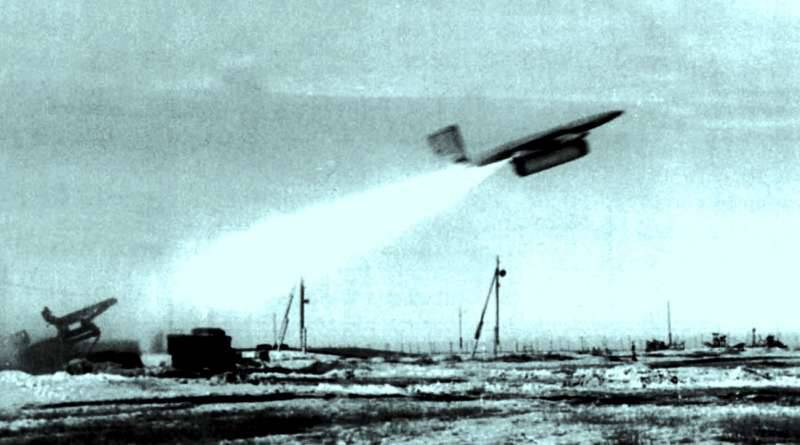
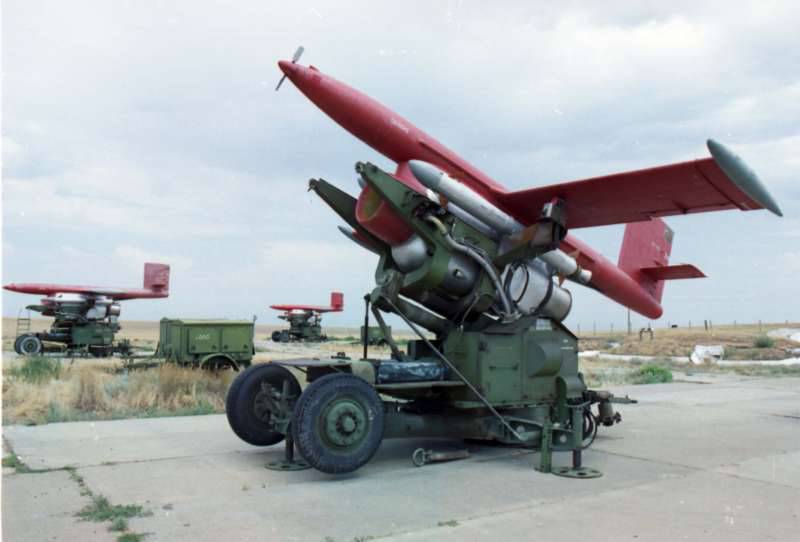
Information